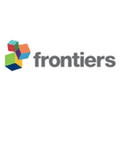
BRAIN BEHAVIOR AND EVOLUTION
Scope & Guideline
Advancing Insights into Neurobiological Evolution
Introduction
Aims and Scopes
- Neuroethology and Comparative Neuroscience:
The journal emphasizes studies that investigate the neural basis of behavior in various species, exploring how different neurological structures and systems contribute to behavioral adaptations. - Evolutionary Developmental Biology (Evo-Devo):
Research focusing on the evolutionary aspects of brain development and how developmental processes shape neural architecture and function in relation to evolutionary pressures. - Cognitive Neuroscience and Behavior:
Papers often explore the links between cognitive functions, such as memory and learning, and their underlying neural mechanisms, with a strong focus on comparative studies across species. - Sensory and Motor Systems:
The journal publishes work on the evolution and organization of sensory and motor systems, examining how these systems interact with behavior and ecological adaptations. - Phylogenetic and Morphological Studies:
It includes comparative analyses of brain morphology and phylogeny, investigating how evolutionary relationships influence brain structure and function.
Trending and Emerging
- Neurogenesis and Behavior:
There is a notable increase in research examining the effects of environmental factors, such as diet and stress, on neurogenesis and subsequent behavioral changes, reflecting a growing interest in how external factors influence brain development. - Interdisciplinary Approaches:
An emerging trend is the integration of cognitive neuroscience with evolutionary theory, exploring how cognitive processes have evolved and their implications for behavior across species. - Impact of Climate Change on Brain Evolution:
Recent studies are increasingly addressing how climate change affects brain size and function, emphasizing the relevance of environmental factors in evolutionary adaptations. - Comparative Studies of Neural Systems:
There is a rising interest in comparative analyses of neural systems across different taxa, particularly focusing on adaptations in sensory and motor systems in response to ecological challenges. - Sex Differences in Neural Mechanisms:
Research exploring sex differences in brain structure and function, particularly in relation to behavior and cognition, is gaining traction, highlighting the importance of gender as a variable in neuroscience.
Declining or Waning
- Traditional Neuroanatomy:
While still relevant, traditional studies solely focused on neuroanatomy without a behavioral context are becoming less common, as there is a growing preference for research that integrates functional and evolutionary perspectives. - Single Species Studies:
Research that focuses on a single species without broader comparative analysis is diminishing. The journal is increasingly favoring studies that draw connections across multiple species to highlight evolutionary implications. - Basic Physiological Studies:
Papers that concentrate solely on physiological measurements without linking to behavioral outcomes or evolutionary significance are being published less frequently.
Similar Journals

JOURNAL OF COMPARATIVE NEUROLOGY
Unlocking the Secrets of Nervous SystemsThe Journal of Comparative Neurology, published by Wiley, stands as a cornerstone in the field of neuroscience since its inception in 1911. With an ISSN of 0021-9967 and an E-ISSN of 1096-9861, this esteemed journal spans a comprehensive scope of comparative neuroanatomy, neurophysiology, and neural development, providing critical insights into the intricate workings of nervous systems across species. The journal has earned a prestigious Q2 ranking in the category of general neuroscience for 2023, showcasing its substantial impact, reflected in its Scopus ranking of #47 out of 113 journals in its field. Researchers and professionals examining evolutionary patterns, neural structure functions, and comparative studies will find this journal an invaluable resource. Although it does not provide open access, its rigorous peer-review process ensures the publication of high-quality research that is crucial for advancing knowledge in comparative neurobiology. With a commitment to fostering scholarly exchange, the Journal of Comparative Neurology remains dedicated to exploring the complexities of the nervous system through a comparative lens, making it a vital platform for the global neuroscience community.

Brain and Behavior
Connecting Minds: Where Neuroscience Meets Behavior.Brain and Behavior is a premier open-access journal published by WILEY, dedicated to advancing the field of Behavioral Neuroscience. With its ISSN 2162-3279, the journal has established itself as a vital resource for researchers, professionals, and students alike, fostering the dissemination of cutting-edge research since its inception in 2011. Renowned for its rigorous peer-review process, it enjoys a commendable Q2 ranking within the field, reflecting its impactful contributions and relevance in the scientific community. The journal not only emphasizes innovative studies that bridge behavioral science and neuroscience but also serves as a platform for diverse methodologies and interdisciplinary approaches. Accessible [open access](https://onlinelibrary.wiley.com/journal/21623279), Brain and Behavior invites submissions that explore the neural mechanisms underlying behavior, aiming to engage a global audience eager to expand the boundaries of knowledge in this dynamic field. Positioned in the heart of the United States, at 111 River St, Hoboken, NJ, it is strategically placed to collaborate with leading institutions and researchers worldwide.

Network Neuroscience
Advancing Knowledge in Neural Networks and BeyondNetwork Neuroscience is a premier open-access journal published by MIT Press, focusing on the interdisciplinary nexus of neuroscience, applied mathematics, artificial intelligence, and computer science. Since its inception in 2017, the journal has established itself as a leading outlet for innovative research and cutting-edge methodologies, ensuring disseminated knowledge is freely accessible to all. With an impressive Q1 ranking in multiple categories including Applied Mathematics, Artificial Intelligence, Computer Science Applications, and Neuroscience, it serves as a vital platform for scholars, professionals, and students to explore the intricate networks that underpin cognitive processes and brain function. The journal is committed to advancing the understanding of complex neural mechanisms through interdisciplinary approaches and remains a crucial resource for anyone engaged in the burgeoning fields of network science and neuroscience research.

BRAIN AND COGNITION
Illuminating the Pathways of ThoughtBRAIN AND COGNITION, published by Academic Press Inc Elsevier Science, stands as a vital resource for researchers and practitioners in the realms of cognitive neuroscience and psychology. Established in 1982, the journal has continuously evolved, showcasing cutting-edge research that bridges the understanding of brain functions and cognitive processes up to 2024. With an impressive impact factor reflecting its commitment to high-quality scholarship, the journal currently holds a prestigious Q1 ranking in Arts and Humanities (miscellaneous) and notable Q2 rankings in various psychology fields, including Cognitive Neuroscience, Developmental and Educational Psychology, Experimental and Cognitive Psychology, and Neuropsychology. This multidisciplinary journal cultivates a rich academic dialogue, offering valuable insights to professionals, researchers, and students alike. Although it does not offer open access, its robust indexing in Scopus and consistent contribution to important discussions in cognitive research define its critical role in advancing knowledge and innovation in the cognitive sciences.

Frontiers in Human Neuroscience
Connecting Minds: Where Neuroscience Meets Behavioral ScienceFrontiers in Human Neuroscience is a premier open access journal published by FRONTIERS MEDIA SA, dedicated to advancing the understanding of the complexities of human neuroscience. With an ISSN of 1662-5161, the journal has established its prominence in various fields, achieving a Q2 ranking in categories such as Behavioral Neuroscience, Neuropsychology and Physiological Psychology, and Psychiatry and Mental Health as of 2023. Since its inception in 2008, Frontiers in Human Neuroscience has consistently contributed to the scholarly dialogue by offering a platform for innovative research that bridges the gap between neuroscience and behavioral science. The journal's rigorous peer-review process and commitment to open access ensures that findings are readily available, promoting collaboration and progress within the academic community. With an impact on neuroscience disciplines, it stands at the forefront of the field, inviting researchers, professionals, and students alike to engage with cutting-edge studies and developments. The journal's address is located in Lausanne, Switzerland, where it continues to flourish as a hub for neurobiological exploration.

Biological Psychiatry-Cognitive Neuroscience and Neuroimaging
Illuminating the Pathways of Cognitive NeuroscienceBiological Psychiatry-Cognitive Neuroscience and Neuroimaging is a leading interdisciplinary journal published by Elsevier, focusing on the convergence of biological psychiatry, cognitive neuroscience, and advanced neuroimaging techniques. With its prestigious Q1 rankings across essential categories such as Biological Psychiatry, Cognitive Neuroscience, and Neurology (clinical), this journal is at the forefront of research that examines the complexities of mental health through innovative methodologies. Covering a broad spectrum of topics from neurobiological mechanisms to clinical applications, it aims to provide a platform for scholars and practitioners to exchange insights on mental disorders and their neurobiological underpinnings. The impact factor and Scopus rankings further underscore its importance, with rankings highlighting its position in the top percentiles of related disciplines. By fostering an open exchange of ideas and promoting cutting-edge research, this journal is an essential resource for researchers, professionals, and students dedicated to advancements in the understanding and treatment of psychiatric and neurological conditions.

ARTHROPOD STRUCTURE & DEVELOPMENT
Illuminating the Evolution of ArthropodsARTHROPOD STRUCTURE & DEVELOPMENT, published by Elsevier Science Ltd, is a leading journal dedicated to the intricate study of arthropod morphology, physiology, and developmental biology. With an ISSN of 1467-8039 and an E-ISSN of 1873-5495, this journal plays a critical role in advancing our understanding of insect science as demonstrated by its impressive Q1 ranking in this category. It occupies a respected position within the academic landscape, being ranked Q3 in Developmental Biology and Q2 in both Ecology, Evolution, Behavior and Systematics, and Medicine (miscellaneous), illustrating its interdisciplinary appeal. Covering research from 2000 to 2024, ARTHROPOD STRUCTURE & DEVELOPMENT offers a robust platform for researchers who are keen to unlock the complexities of arthropod life, contributing significantly to the fields of entomology and ecological research. Open access options ensure that groundbreaking discoveries are readily available to a global audience, fostering collaboration and innovation. As a vital resource for students, professionals, and academics, this journal is indispensable for those dedicated to exploring the fascinating world of arthropods.

CEREBRAL CORTEX
Elevating the discourse in neuroscience research.CEREBRAL CORTEX, published by Oxford University Press Inc, is a premier journal dedicated to advancing the field of neuroscience, specifically focusing on the cellular, molecular, and cognitive aspects of cortical structure and function. With an impressive impact factor that situates it in the top quartile (Q1) of its categories for 2023, this journal holds significant relevance for researchers and professionals interested in the latest discoveries and methodologies in both Cognitive Neuroscience (ranked #31 out of 115) and Cellular and Molecular Neuroscience (ranked #48 out of 97). Operating without an open access model, it ensures rigorous peer review and dissemination of high-quality research from across the globe. Since its inception in 1991, CEREBRAL CORTEX has established itself as a critical platform for educators and inventors, pushing the boundaries of knowledge in understanding brain function and its implications for behavior. Researchers and students alike will find this journal an invaluable resource for both foundational and cutting-edge studies in neuroscience.

Hormones and Behavior
Unraveling the Secrets of Endocrine Influence on ActionsHormones and Behavior, published by Academic Press Inc, Elsevier Science, serves as a premier forum dedicated to the multifaceted relationship between hormonal mechanisms and behavioral outcomes. With roots tracing back to 1969, this journal has cultivated a diverse scope that crosses the domains of Behavioral Neuroscience, Endocrinology, and Endocrine and Autonomic Systems, solidifying its position in the scientific community with an impressive Q2 ranking in these categories as of 2023. As a vital resource for researchers, professionals, and students, the journal emphasizes innovative research that unveils the intricate interplay between endocrine signals and behavioral patterns, thereby promoting a deeper understanding of physiological and psychological processes. Although not an open-access publication, Hormones and Behavior continues to garner respect in its field, with Scopus rankings highlighting its relevance and cutting-edge contributions to neuroscience and endocrinology, underpinning its mission to advance knowledge and inspire future explorations in these interconnected disciplines.

Neuropsychologia
Unlocking the Secrets of the Mind through Innovative StudiesNeuropsychologia, published by PERGAMON-ELSEVIER SCIENCE LTD, is a premier journal that delves into the intersections of psychology and neuroscience, specifically focusing on behavioral and cognitive processes. Since its inception in 1963, this esteemed journal has been a vital platform for researchers, professionals, and students, showcasing innovative studies and advancements in the fields of Behavioral Neuroscience, Cognitive Neuroscience, and Experimental Psychology. With a commendable impact factor, placing it in the Q2 category across multiple disciplines, Neuropsychologia is recognized for its contribution to the scientific community, ranking among the top journals in both Experimental and Cognitive Psychology and Neuroscience. The journal's commitment to excellence is evident in its rigorous peer-review process and its mission to disseminate cutting-edge research, making it an invaluable resource for those seeking to expand their knowledge and insights in neuropsychology. For further reading, the journal is accessible in both print and digital formats, ensuring that researchers can easily engage with the latest findings and theoretical advancements in this dynamic field.